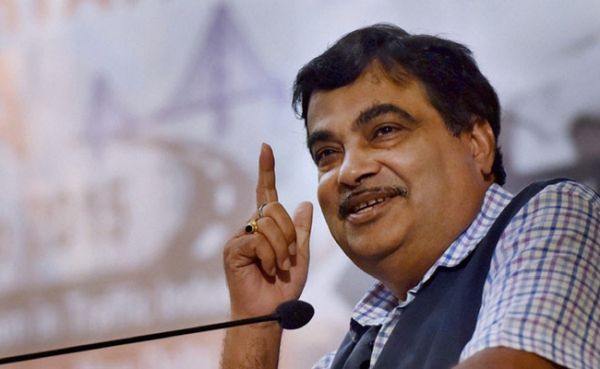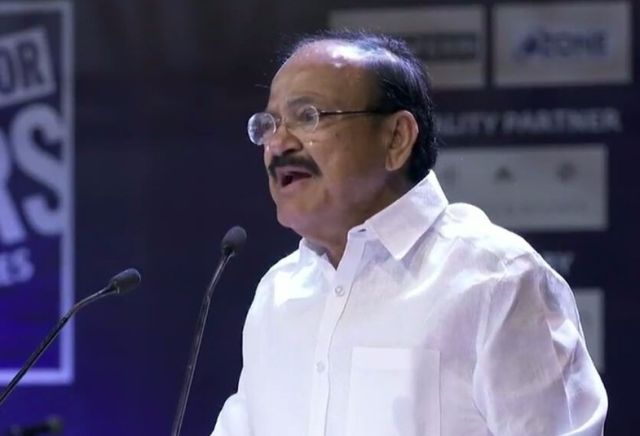
by admin | May 25, 2021 | Corporate, Corporate Governance
 By Arun Kumar Das,
By Arun Kumar Das,
New Delhi : Indian Railways’ long-awaited and ambitious project to set up a waste-to-energy plant at Jaipur railway station has run into Goods and Services Tax (GST) hurdles, causing a delay in the commissioning of the first such municipal solid waste management centre on the rail network.
Though the process of setting up the plant in Jaipur and then at the New Delhi station began two years back and the successful bidder has brought in the required machinery and technology, the procurement process is yet to be GST-compliant, causing the delay.
While the Jaipur plant would manage five tonnes of solid waste per day, the New Delhi plant would have a capacity of 10 tonnes per day. The process involves segregation, recycling and conversion of waste to energy.
The Railways has provided the land to set up the plants and the project is being executed by the RITES, a public sector unit under the Railways, through its corporate social responsibility (CSR) fund.
Admitting to the delay in commissioning the project, a senior Railway official told IANS: “Since this is the first such project being executed by Railways; there are several issues to be sorted out as a learning experience. Unless procurement is fully GST-compliant, Railways cannot make payment.
“Besides, there was also a delay on the part of the successful bidder in arranging a bank guarantee as the recent banking scam has made the process tougher.”
The project involves segregation of bio-degradable and non-degradable waste. According to an estimate, one tonne of bio-degradable waste produces 100 units of electricity. Energy generated from these plants would be utilized for suitable services at/near railway stations.
However, the official hoped that the GST issue would be sorted out and the first plant is expected to be operational in Japiur shortly and next plant at New Delhi station would closely follow.
Railways have given instructions to all zones and production units to set up solid waste management facilities, including segregation and waste-processing methods such as composting, vermi-composting, bio-methanation, for bio-degradable waste and recycling of recyclable waste.
Besides Jaipur and New Delhi, Railways will be setting up such plants for disposal of municipal solid waste generated at railway stations at four more stations — Patna, Secunderbad, Chennai and Varanasi — in an environment friendly manner, including conversion of waste to energy.
(Arun Kumar Das can be contacted at akdas2005@gmail.com)
—IANS

by admin | May 25, 2021 | Business, Corporate, Corporate Buzz, Emerging Businesses, Investing, Medium Enterprise, Property, SMEs
 By Rituraj Baruah,
By Rituraj Baruah,
New Delhi : For commercial real estate, developers feel the worst is over, and signs of a revival have started showing up with pent-up demand and stocks declining. The outlook for the sector, they say, is now better.
In line with the slump in the residential segment, commercial real estate too went through a slowdown in the last five years and received major back-to-back blows in the past couple of years with the coming in of the Real Estate Regulatory Act (RERA), Goods and Services Tax (GST) and demonetisation. But now, market players say, the bad phase is over.
“The demand from commercial real estate has increased with improved occupancy and rentals. The commercial real estate market has witnessed a growth due to the increased penetration of e-commerce, demand for quality workplaces and warehouses,” Amit Wadhwani, Director of Sai Estate Consultants, told IANS.
Prasoon Chauhan, CEO of NCR-based HomeKraft, was upbeat about the outlook for the sector and said: “It is expected that the coming quarters will continue to witness more commercial supply across key markets. As a result of the stricter regulations in the real estate industry, commercial real estate will continue to see healthy leasing volumes.”
Going by the current demand, it is expected that the average rent for “grade A” office spaces is likely to rise marginally in key markets and continue to attract demand, while new emerging areas will continue to witness stable rents for now, Chauhan said.
Talking about higher demand leading to decline in stocks, Vipul Shah, Managing Director of Parinee Group, expressed the view that “the vacancies in commercial real estate is at an all-time low and there is robust demand from corporate and SMEs (small and medium enterprises).”
Office space absorption is not only strong but pre-leasing is at an all-time high, indicating sustained demand and occupiers’ interest in commercial spaces, Shah said.
Another encouraging factor for the segment, developers say, is the flow of foreign investments. According to Mumbai-based Nahar Group’s Vice Chairperson, Manju Yagnik, “foreign investments are coming mainly into commercial projects” and it is felt that foreign direct investments are safer in the commercial realty than in the residential segment.
Real estate players are also hopeful of more demand coming in the commercial segment in the form of investments.
Wadhwani said: “Individuals with deep pockets are looking forward to invest in commercial real estate where the demand will only increase along with supply.”
“Because from the investment point of view, commercial probably will give you much higher return than residential at this time,” Yagnik said, adding: “Residential has become a little stagnant and probably in the coming one or two years you will see there is a better boom in commercial stocks probably than residential.”
However, Dharmesh Jain, Chairman of real estate group Nirmal, feels that “despite investment potential, commercial real estate has not remained preferred investment option”. He however added that newer markets are emerging as investment destinations for commercial and retail investments.
The market has also been supported by the confidence-building measures as a result of RERA, which initially had caused a major disruption to the market.
“Developers have become happy that it (commercial real estate) has become more organised and more systematic. It is a win-win situation for both the buyers and the developers,” Yagnik of Nahar Group told IANS.
On GST and demonetisation, which were major blows to the already laggard real estate market, Shah from Parinee Group told IANS: “GST has increased the burden but gradually customers and developers are absorbing the same in their scheme of things.” He said demonetisation was now a thing of the past.
A significant trend emerging in the commercial real estate segment which has raised hopes of better demand is the concept of “co-working spaces”. Developers feel this concept would bring in more of rental and office space demands.
In co-working spaces, organisations share office spaces with flexible time periods at comparatively lesser cost than renting a specific office space, making market players call it the affordable segment of office spaces.
Pranay Gupta, Co-founder of 91springboard, co-working space provider, described the demand in the segment as “tremendous” and said that other than start-ups, venture capital funds, non-government organisations and many listed companies work out of co-working spaces.
“You will see commercial real estate builders doing tie-ups with co-working firms and every organisation with less than 300 people is likely to move to co-working spaces,” he added.
“With technology changing so much and the cloud being available, to connect anybody, anywhere, it has become the focus of companies to allow for flexibility to their employees and to look at real estate in terms of an outsourced asset rather than an owned asset,” said Harsh Lambah, India Country Manager, International Workplace Group.
Lambah also said that in a few years, a large part of commercial real estate would be covered by the co-working concept.
Although the current trend in the commercial segment is mostly positive and developers largely see better days coming, finance and availability of land are an issue, as per the market players.
Jain of Nirmal said: “Limited accessibility of developable land in the metro cities in India adds to the existing problem of concentrated commercial development. We expect the government to develop infrastructure in emerging location, which will induce connectivity and inspire commercial investments.”
Shah was of the opinion that project financing for commercial real estate should be made more easily available and at lower interest rates.
(Rituraj Baruah can be contacted at rituraj.b@ians.in)
—IANS

by admin | May 25, 2021 | Economy, News, Politics

Nitin Gadkari
New Delhi : With petrol and diesel rates skyrocketing on a daily basis, Road Transport and Highways Minister Nitin Gadkari on Friday advocated bringing fuel under the GST to curb the price hike.
“Petrol and diesel should have been brought under the Goods and Services Tax. I asked officials during a presentation if we bring fuel prices under GST will it benefit the states or not.
“They said ‘yes’, they will benefit,” Gadkari said at a news conclave here on the four years of Prime Minister Narendra Modi’s government.
He said, however, the states were wary of losing revenue on account of taxes they collect from fuel prices and liquor.
“It will be good if fuel prices are brought under GST. This will not only reduce the fuel prices but will also increase the government’s revenue.”
He, however, said it was his personal opinion, and the ultimate decision regarding this remained with the Petroleum Ministry.
The Minister said fuel prices were surging because of international crude oil rate.
“Earlier, we were giving subsidy on the import (of fuels). When the rates came down, the subsidy was removed. We are part of a global economy…The price of petrol and diesel are increasing due to rise of their price in international rates.”
He said the money that was saved from removing subsidy on fuel allowed the government to give free Liquid Petroleum Gas (LPG) connections to eight crore families across India.
—IANS

by admin | May 25, 2021 | Corporate, Corporate Governance, News, Politics

Venkaiah Naidu
Agartala : Vice-President M. Venkaiah Naidu on Wednesday said that the GST and demonetisation were “revolutionary steps” taken by Prime Minister Narendra Modi, adding that many international institutions were highly appreciative of India’s growth.
“With the introduction of GST (Goods and Services Tax) and demonetisation, the Prime Minister took revolutionary steps. The GST revenue in April has crossed Rs 1.4 lakh crore, indicating high hopes for the new tax regime,” Naidu said in his convocation address at the Tripura University here.
He said: “Due to such reforms,India’s growth was projected around 9 per cent in 2022. Now is the era of LPG — Liberalisation, Privatisation and Globalisation. The mantra of our Prime Minister is Reform, Perform and Transform.”
Asking the students to learn and promote their mother tongue, the Vice-President said that if they wanted to go abroad they should study there but return to India to enrich its human resource.
“For higher education and any other purposes, English is not necessary. Respect your mother, mother tongue and motherland. British cheated our minds. People of many countries do not speak English. You can learn English, but not at the cost of your mother tongue.”
“Do not celebrate any festival in memory of Parliament attack convict Afzal Guru. Respect and celebrate the real “guru” (teacher) of your life. Don’t always go for Google search, replace Google by “guru.”
He also emphasised that horticulture, floriculture and cultivation of medicinal plants could hold great prospects for northeastern states.
The 11th convocation of the Tripura University was held after five years. As many as 142 scholars received Ph.D. degrees and around 400 students from many streams received gold and silver medals.
Vice-Chancellor Anjan Kumar Ghosh said that since 2015, the central varsity had decided to admit international students.
“Nearly a dozeen students from Bangladesh applied online and were admitted to various programmes. Now, students from Bangladesh are joining our Ph.D courses,” he added.
—IANS

by admin | May 25, 2021 | Business, Economy, Emerging Businesses, Investing, Markets, News, Property
 By Rituraj Baruah,
By Rituraj Baruah,
New Delhi : After four consecutive years of slump and low demand in the real estate sector, market participants believe 2018 will be a year of revival as the sector has finally shed the impact of demonetisation, Goods and Services Tax (GST) and the implementation of the Real Estate Regulatory Act (RERA).
Business stakeholders say the government could do its bit to push the real estate sector forward by giving it an industry or infrastructure status, which would help lower the cost of funds for developers and reduce prices for consumers.
Although demand is not bullish, the sector is rising from its trough, with unsold inventory slowly finding consumers, they say.
“Earlier there were around 600,000 units unsold. Now that’s down to about 450,000 units in the country,” said Narasimha Jayakumar, Chief Business Officer at 99acres.com , a property advisory website.
“We are quite optimistic about the whole sector in the next 12 months. I think it’s going to increase…it’s going to grow,” Jayakumar told IANS.
Amit Modi, Vice President, Credai Western Uttar Pradesh, said: “In 2017-2018, according to reports from markets such as Mumbai, Delhi and Bengaluru, there is an increment of 30 per cent in sales compared with 2016-2017.” Credai is the apex body representing real estate developers.
Modi, who is also the Director of the real estate company ABA Corp, said there are instances of rise in prices.
“In one of my projects, which is in the premium segment, we started selling at Rs 3,500-Rs 4,000 per square foot four years back, but (now) the price in our project is more than Rs 6,500 per square foot. In some units we have touched the price of Rs 7,000,” he added.
Online search for properties are also on the rise, said Jayakumar. “There are several examples we are seeing… there is 50 per cent growth in searches. There has been a 45-50 per cent growth in queries for buying,” he said.
However, although searches and research regarding properties have risen from September onwards, the process of concluding a sale was still slow, said Jayashree Kurup, Head of Content and Advice at magicbricks.com .
“In January this year, the market was fairly active from the end-user side before a marginal slowdown in mid-February,” Kurup told IANS.
“In the last two-three weeks we have seen an uptick again and I think it is a very slow and steady market.”
Talking about the demand for apartments, the stakeholders said the trend is changing from buying by investors to end-users. “Investors used to earlier buy 50-60 per cent, that number is now down to 8-10 per cent,” Jayakumar said.
“In many cases the difference between the rent and EMI (equated monthly installment) is only 15-20 per cent, particularly with the credit-linked subsidy scheme, depending on the prices of property and the loan tenure, making it very attractive for the youth to buy,” he added.
Real estate players felt, apart from the market dynamics, the sector is also seeing structural changes and consolidation among small players, largely after the implementation of the RERA and its mandate to establish state units.
Although the introduction of RERA disturbed the status quo in the market, which was largely unorganised and unregulated, its proper and complete implementation would clear up the sector of unscrupulous players and bring about confidence among buyers, they say.
Stakeholders, however, expressed concern about not getting industry status for the sector.
“Industry status means that you can get access to lower-cost bank financing. You don’t have to go to an NBFC (non-banking financial company), other private financing or private equity, which are much more expensive,” Jayakumar said.
Modi emphasised that to reach the target of housing for all, industry status was required.
“(With industry status) the sector will be more organised, one window clearance will be there, and cheap finance will be there, which will definitely stabilise this business and also fulfil the Prime Minister’s dream of housing for all by 2022,” he said.
Although the government provided the industry or infrastructure status to affordable housing projects in Budget 2017-18, it does not seem to be budging on the demand of real estate players for the status to be extended to the whole real estate sector.
Going ahead in the year, the market players also believe the rental housing policy will play a significant role in the sector.
The policy, which is currently at consultation stage and will be sent for cabinet approval after due diligence, is aimed at alleviating the housing shortage in urban areas by encouraging renting of homes.
(Rituraj Baruah can be contacted at rituraj.b@ians.in )
—IANS





